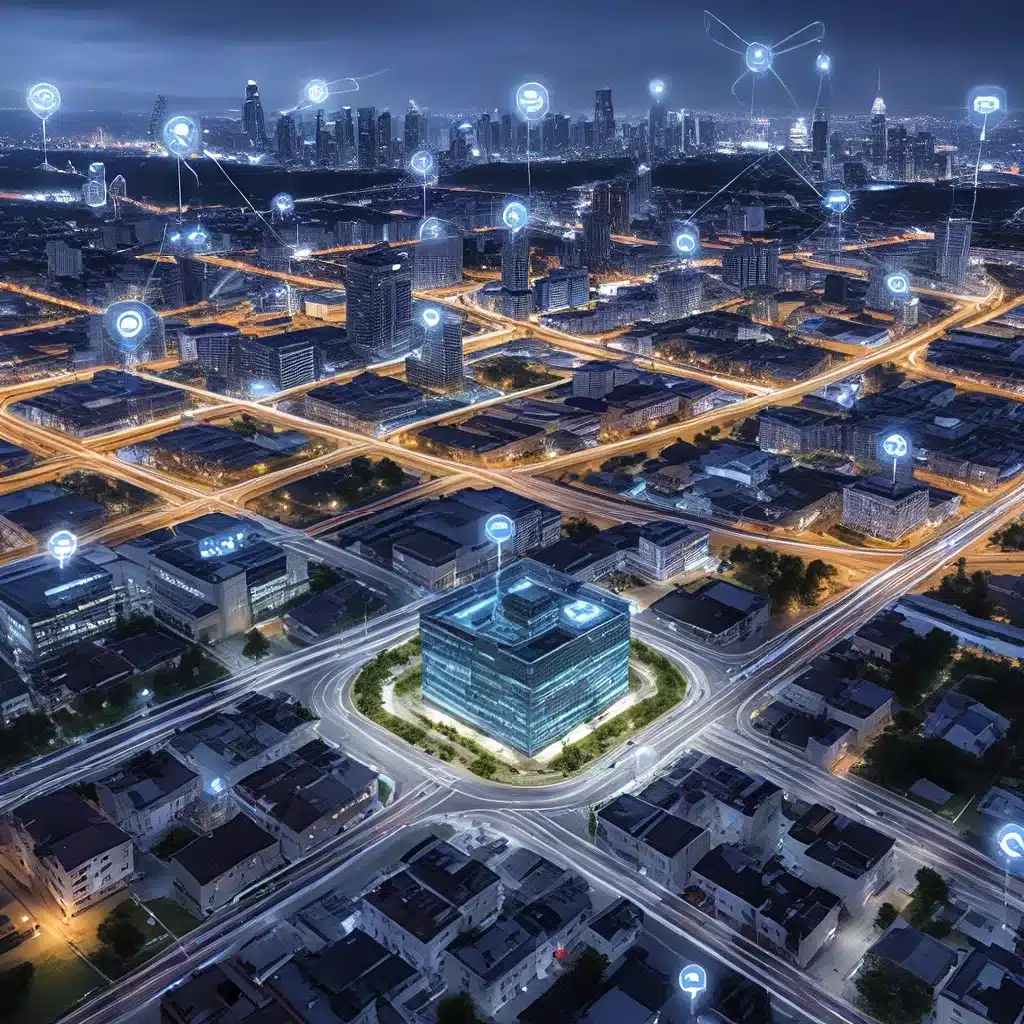
The Rise of Sensor Networks in the IoT Era
In the rapidly evolving world of technology, the integration of sensor networks and the Internet of Things (IoT) is transforming industries across the globe. From manufacturing automation using robotics and cobotics (human-robot collaboration) to predicting equipment failure on the factory floor and tracking assets in a warehouse, the industrial IoT is at the center of the future of manufacturing.
As the IoT landscape continues to expand, the role of autonomous sensor networks has become increasingly crucial. These advanced networks of interconnected sensors are enabling intelligent monitoring and control across a wide range of applications, empowering organizations to optimize their operations, enhance decision-making, and drive sustainable growth.
Unlocking the Potential of Sensor Networks
At the heart of autonomous sensor networks are the sensors themselves, which are designed to collect and transmit a vast array of data from the physical world. These sensors can be configured to monitor a wide range of parameters, such as temperature, humidity, pressure, motion, light, and even sound. By strategically placing these sensors throughout a given environment, organizations can gain unprecedented insights into their operations, enabling them to make informed decisions and respond to changing conditions in real-time.
One of the key advantages of sensor networks is their ability to operate autonomously, without the need for constant human intervention. Through the integration of advanced algorithms and machine learning techniques, these networks can self-configure, self-optimize, and self-heal, adapting to changing environments and ensuring the continuous flow of critical data.
IoT in manufacturing is a prime example of how sensor networks are driving transformative change. In a smart factory setting, sensor-equipped machinery and equipment can continuously monitor their own performance, detect anomalies, and even predict potential equipment failures before they occur. This proactive approach to predictive maintenance not only reduces downtime and maintenance costs but also enhances product quality and operational efficiency.
Navigating the Complexities of Sensor Network Design
Designing an effective sensor network involves navigating a range of technical and logistical challenges. Network topology, communication protocols, power management, and data security are just a few of the critical considerations that must be addressed.
Sensor network design requires a deep understanding of the specific requirements and constraints of the target application. For example, a logistics network tracking the movement of assets in a warehouse may have different design considerations than a precision agriculture network monitoring soil moisture and environmental conditions in a farm.
Network topology is a fundamental aspect of sensor network design, as it determines the communication pathways and data flow within the system. Mesh networks, star networks, and tree-based topologies each offer unique advantages and trade-offs in terms of scalability, reliability, and energy efficiency. The choice of topology will depend on factors such as the geographic distribution of sensors, the volume of data being transmitted, and the power constraints of the individual nodes.
Communication protocols are another crucial element of sensor network design. Low-power wireless protocols like ZigBee, LoRaWAN, and Bluetooth Low Energy (BLE) are commonly used in IoT applications, as they enable efficient data transmission while minimizing energy consumption. The selection of the appropriate protocol will depend on factors such as range, data rate, and interoperability requirements.
Addressing the Security and Energy Challenges
As sensor networks become more ubiquitous, security and energy management have emerged as critical concerns that must be addressed.
Sensor network security is a complex challenge, as these networks are often distributed across large geographic areas and exposed to various physical and cyber threats. Implementing robust encryption, authentication, and access control mechanisms is essential to protect the integrity and confidentiality of the data being collected and transmitted.
IoT security is a rapidly evolving field, with researchers and industry experts continuously developing new security protocols and best practices to mitigate the risks associated with IoT-enabled sensor networks. Secure firmware, end-to-end encryption, and device authentication are just a few of the strategies being employed to enhance the overall security of these systems.
Energy management is another crucial consideration in sensor network design. Battery-powered sensor nodes must be designed to maximize energy efficiency and minimize power consumption, as the cost and complexity of frequently replacing or recharging batteries can be prohibitive. Energy harvesting techniques, such as solar, thermal, or kinetic energy capture, have emerged as promising solutions to address this challenge, enabling self-powered sensor nodes that can operate for extended periods without external power sources.
Realizing the Full Potential of Autonomous Sensor Networks
As the digital transformation of industries continues to accelerate, the role of autonomous sensor networks in IoT applications will only become more prevalent. These advanced systems are poised to revolutionize the way we monitor, control, and optimize a wide range of processes, from smart manufacturing and precision agriculture to infrastructure management and environmental monitoring.
By leveraging the power of sensor networks, organizations can unlock valuable data insights, automate decision-making, and drive sustainable growth. As the technology continues to evolve, we can expect to see even more innovative applications and transformative impacts across a diverse range of industries.
To stay at the forefront of this dynamic landscape, it is crucial for professionals, researchers, and enthusiasts in the field of sensor networks and IoT to stay informed and engaged with the latest advancements and best practices. By exploring the nuances of sensor network design, security, and energy management, we can collectively work towards realizing the full potential of these intelligent, autonomous systems and shaping the future of IoT.